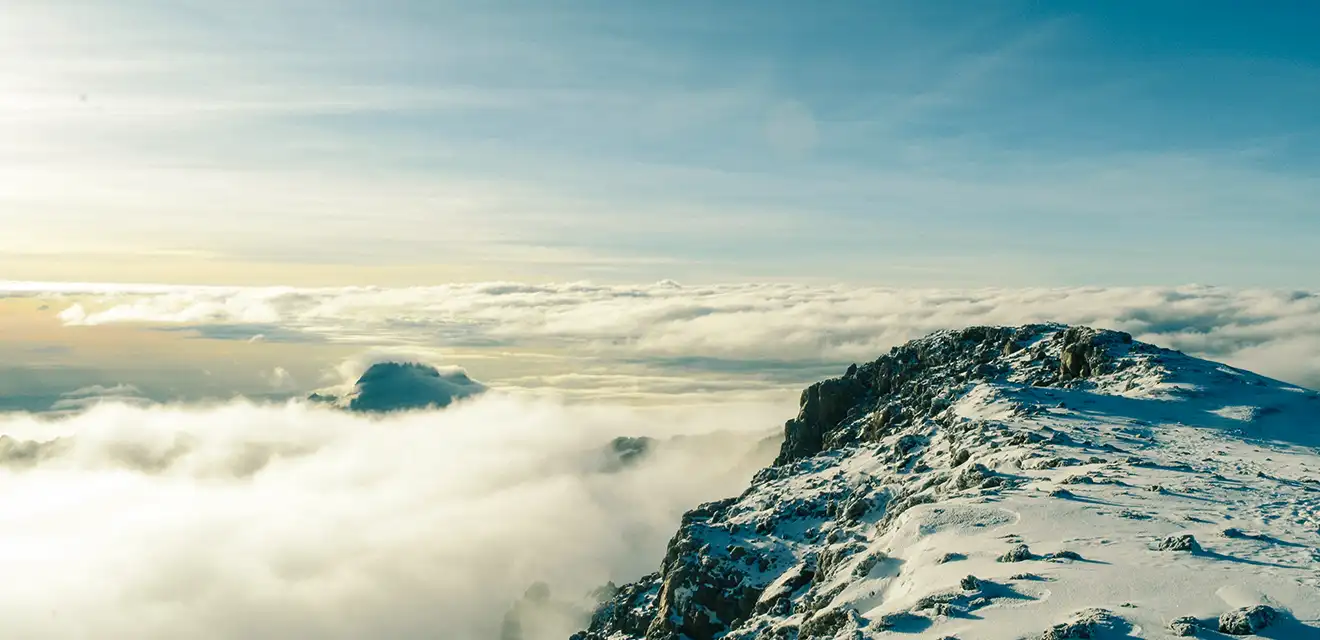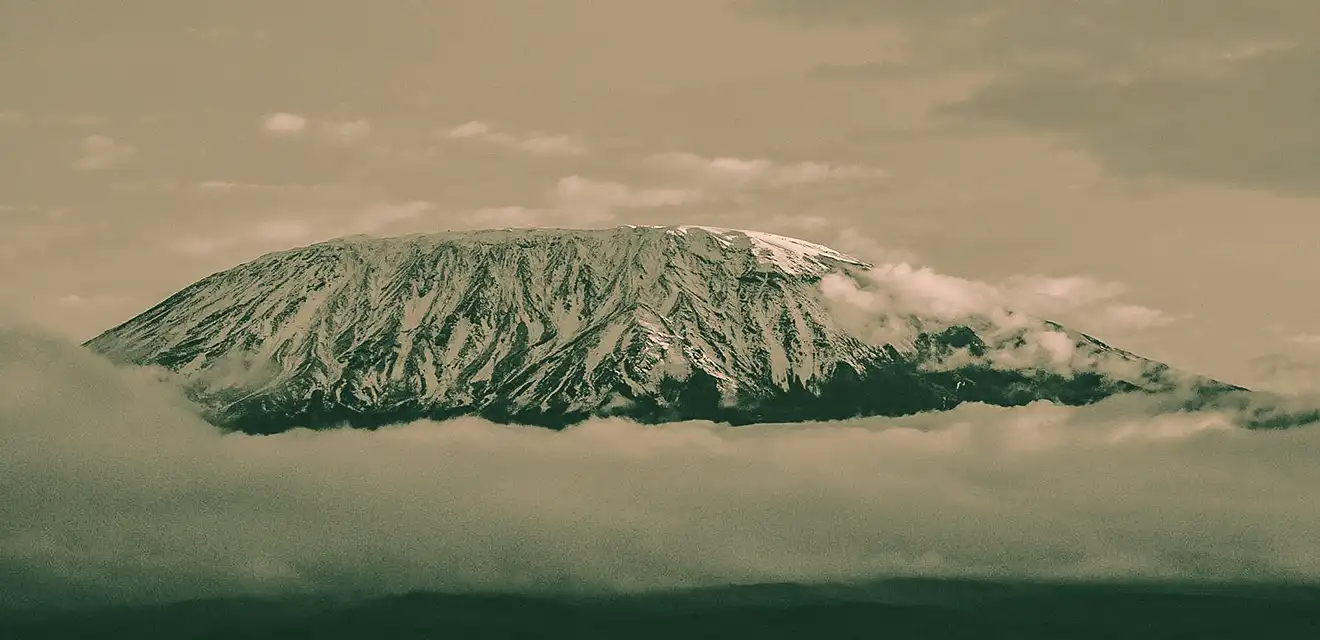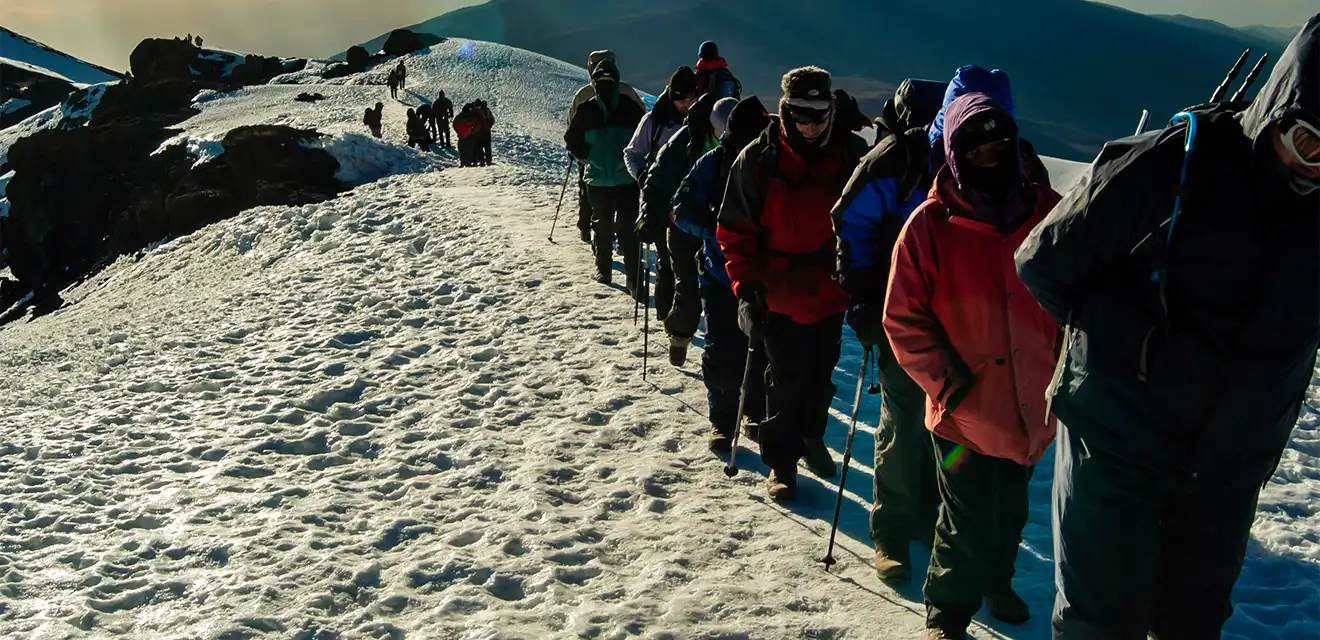7 Days - Machame Route Trekk
7 Days 6 Night
About
The Machame Route, often referred to as the "Whiskey Route," is one of the most popular and scenic paths to the summit of Mount Kilimanjaro. Known for its impressive landscapes, diverse ecosystems, and high success rate, the Machame Route attracts climbers who are up for a more physically demanding experience.
The route begins at Machame Gate, starting in lush rainforest and progressing through diverse environments. Trekkers move from the humid forest to moorlands, alpine desert, and finally the icy, windswept terrain near the summit. Highlights include the dramatic Shira Plateau, the imposing Barranco Wall, and the glaciers of Uhuru Peak.
As one of the busier routes, Machame offers a lively, social trekking experience, with climbers from around the world. This route appeals to those looking for camaraderie and a scenic, immersive adventure up Kilimanjaro.
Included
- Private, waterproof four-season sleeping tents
- Professional and experienced mountain guides
- Airport transfers – Transport from and to the airport
- All meals on the mountain – Meals provided during the climb
- All Entry fees, Park fees, Camping fees, Government Taxes
- Rescue Fees
- Guide, porter, and cook salaries
- Clean, purified drinking water
- Oximeter, Emergency Oxygen & Medical Kit
- Accommodation in Arusha
- Portable toilet
Exclude
- Personal expenses
- Anything else that isn't mentioned on Inclusions
- International and Domestic Flights Tickets
- Travel Insurance
- Tips or gratitude
- Visa Fees
- Alcohol and Soft Drinks
Trekking Plan
The trek begins at Machame Gate, located at an altitude of approximately 1,800 meters (5,905 feet). From here, the route ascends through lush rainforest, where the air is humid and the vegetation is dense. The trek to Machame Camp, situated at around 3,000 meters (9,843 feet), takes about 5 to 7 hours. The camp is set up in a forested area, offering a sheltered environment. Overnight temperatures can be quite cool, so it's advisable to have a good sleeping bag and warm clothing. Dinner and Overnight at Machame Camp
On the second day, the trek moves from Machame Camp to Shira Camp, which sits at an altitude of 3,800 meters (12,467 feet). This stage involves a significant gain in altitude and takes around 4 to 6 hours. The route transitions from the forest to heathland, with views becoming more expansive and dramatic. Shira Camp provides stunning panoramic views of the Kilimanjaro peaks and the surrounding landscape. The night here can be quite chilly, and it's important to prepare for lower temperatures. Dinner and Overnight at Shira Camp.
The third day involves a trek from Shira Camp to Barranco Camp, located at about 3,960 meters (12,993 feet). This part of the trek includes a series of ascents and descents as you traverse the landscape, including crossing the Lava Tower at approximately 4,600 meters (15,091 feet). The descent to Barranco Camp takes about 5 to 7 hours. The camp itself is situated in a dramatic setting with the Barranco Wall towering above. Nighttime temperatures can be quite cold, so layering is essential. Dinner and Overnight at Barranco Camp
The fourth day’s journey is relatively short but steep, taking you from Barranco Camp to Karanga Camp, which is located at 4,000 meters (13,123 feet). The trek involves climbing the Barranco Wall, a significant challenge that provides rewarding views. The walk takes about 4 to 5 hours and leads to Karanga Camp, nestled in a valley with stunning surroundings. The altitude and exposure can make the night chilly, so be prepared for colder conditions. Dinner and Overnight at Karanga Camp.
On the fifth day, the trek continues from Karanga Camp to Barafu Camp, situated at 4,600 meters (15,091 feet). This leg of the journey, taking about 4 to 5 hours, involves a steady ascent through increasingly arid terrain. Barafu Camp is located on a rocky outcrop, offering panoramic views but often subject to strong winds and colder temperatures. This is the final camp before the summit push, so proper rest and hydration are crucial. Dinner and Overnight at Barafu Camp
The sixth day is the summit day. The trek starts very early, often around midnight, with the aim of reaching Uhuru Peak, the highest point at 5,895 meters (19,341 feet), by sunrise. The ascent from Barafu Camp takes approximately 6 to 8 hours. After reaching the peak, the descent to Mweka Camp, at 3,100 meters (10,171 feet), takes about 6 to 8 hours. The trek from the summit is long and requires careful pacing. Mweka Camp provides a welcome respite with relatively warmer temperatures compared to the higher camps. Dinner and Overnight at Mweka Camp.
On the final day, the trek descends from Mweka Camp back to Mweka Gate, where the trek officially ends. This final stretch, taking about 3 to 4 hours, covers a distance of around 10 kilometers (6 miles). The descent passes through lush forest once more, eventually reaching the gate where you'll receive your summit certificate. The atmosphere here is generally celebratory, marking the end of an arduous but rewarding journey.
- Throughout the trek, acclimatization is a key factor in ensuring a successful ascent, as the rapid change in altitude can affect your body’s ability to cope with the thinner air. Each camp provides basic amenities, including dining tents and toilet facilities, though conditions can be quite rudimentary. Proper gear, physical preparation, and adherence to the trek’s pace are crucial for a safe and enjoyable experience.



